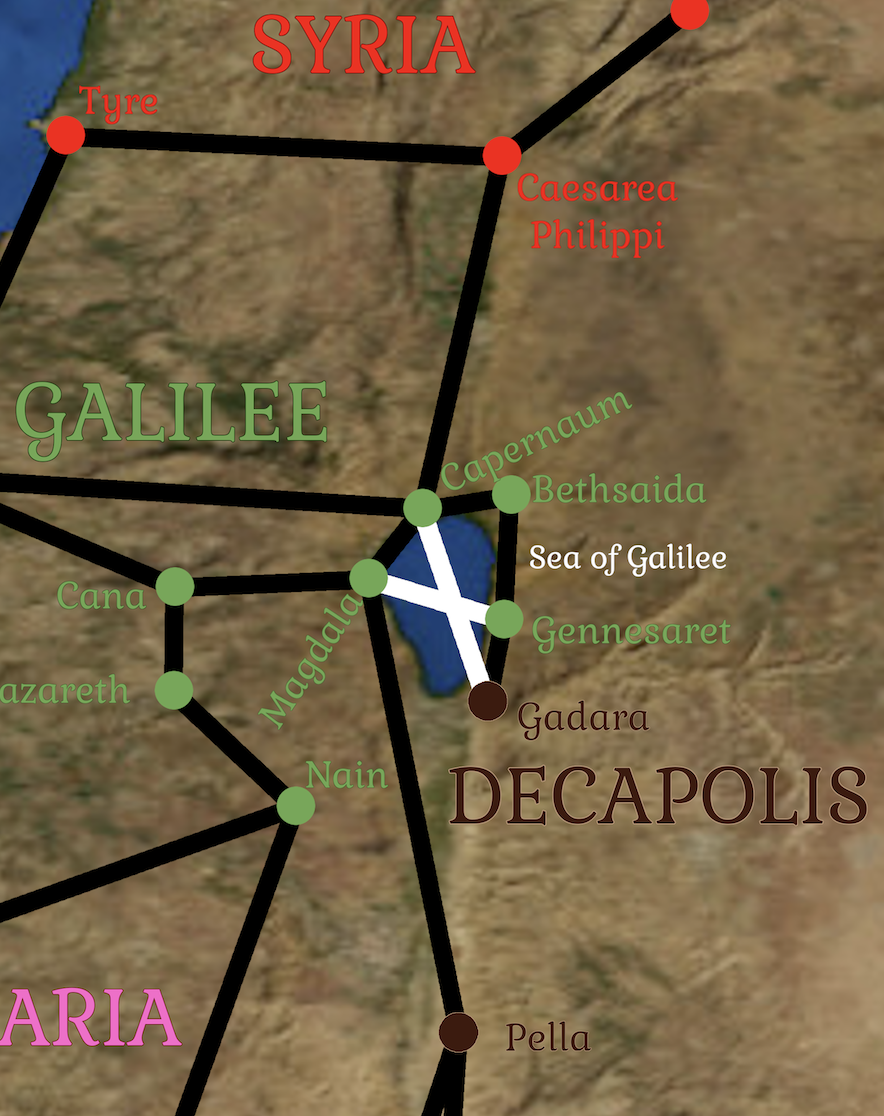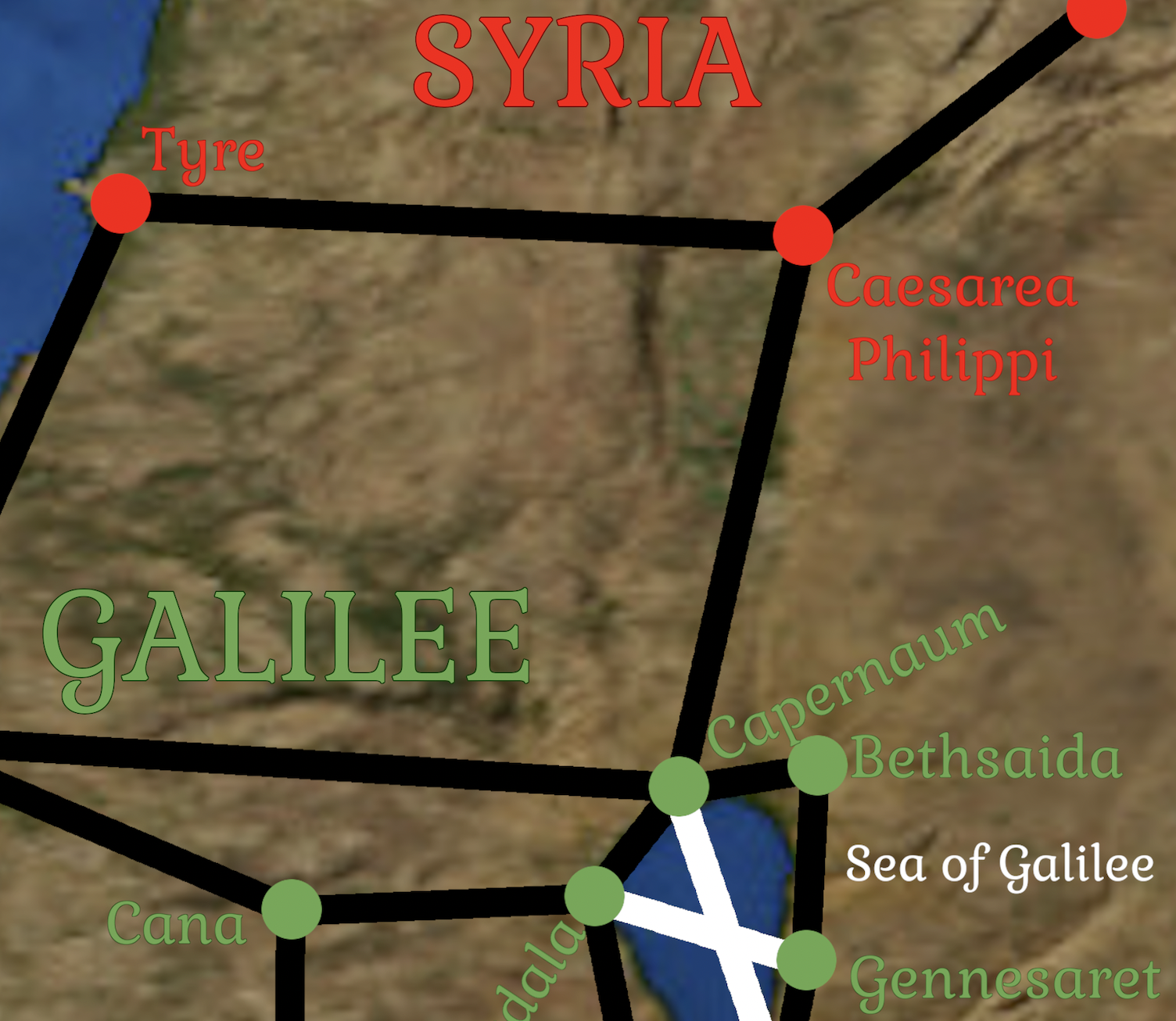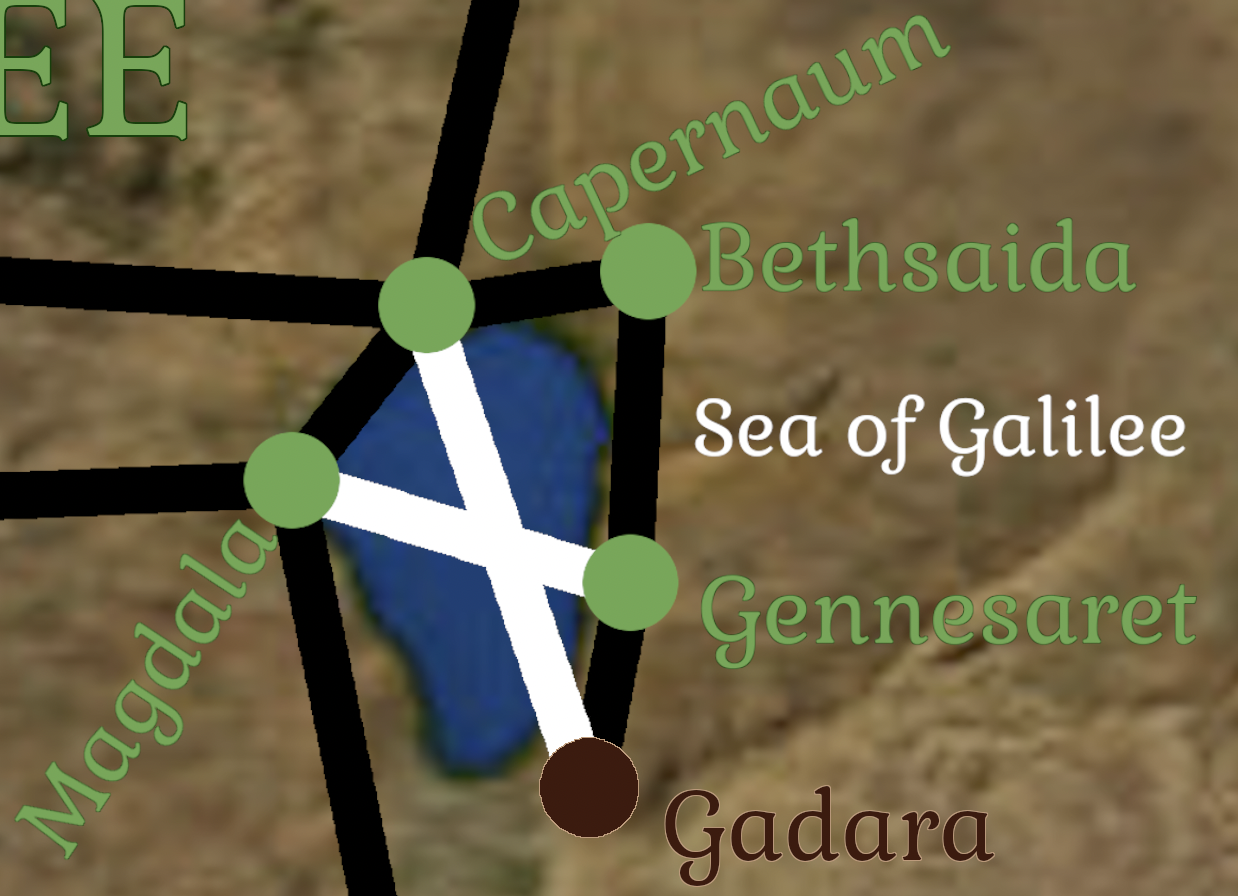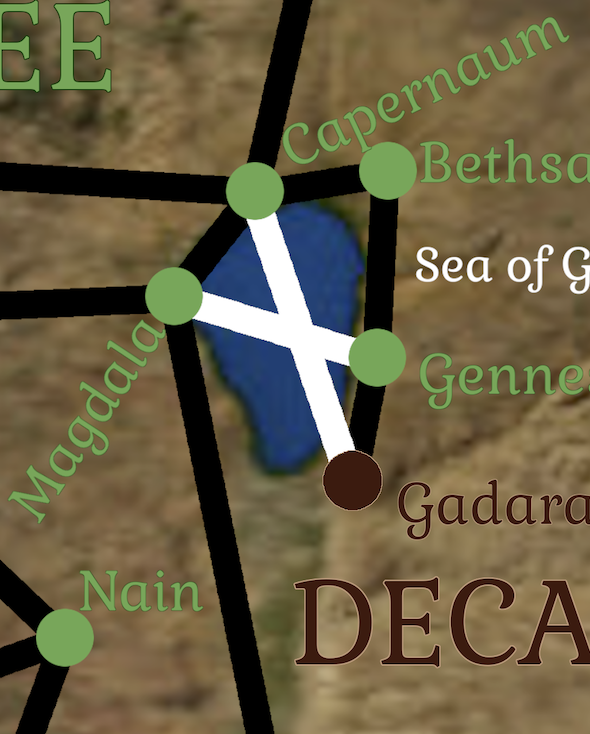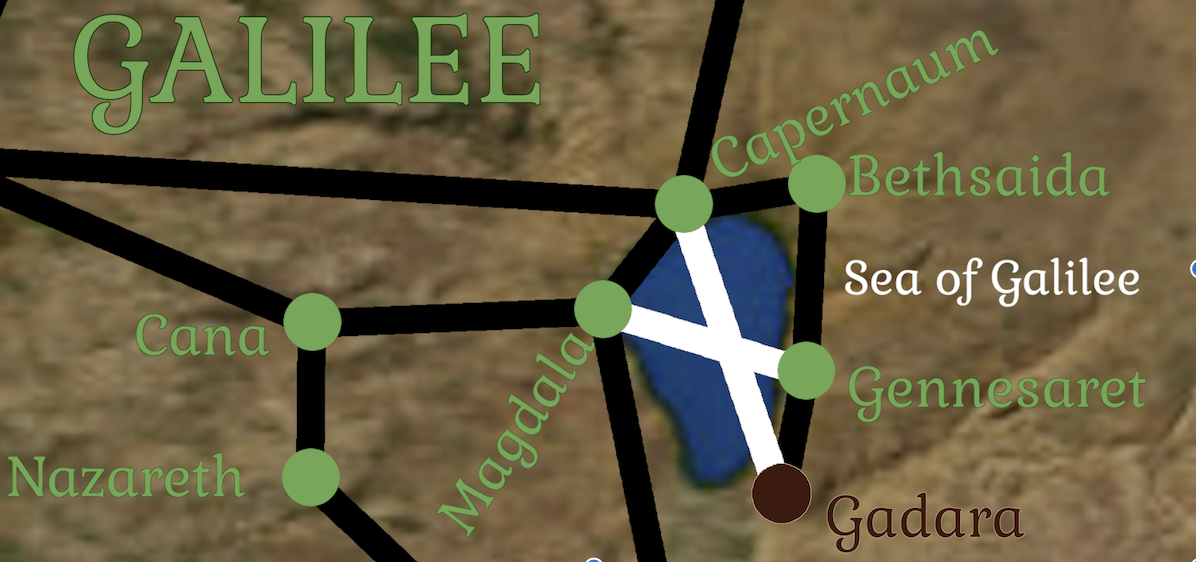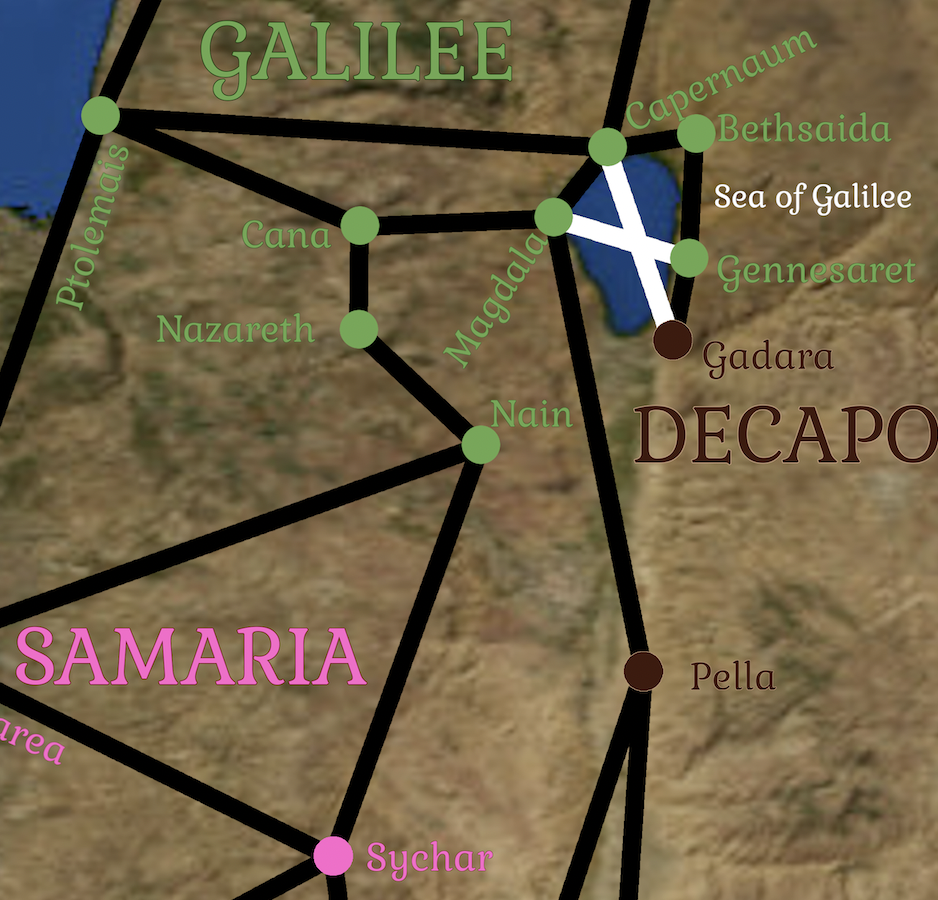We have been looking at Jesus’ ministry in and around the Sea of Galilee. His home base has been Capernaum. In the next couple of weeks, Jesus will take a dramatic turn towards Jerusalem, but before we get there, I want to go back to a journey that I should’ve covered earlier, from early in his Galilean ministry.
The journey we are looking at today is recorded in Matthew 8:23-28, Mark 4:35-5:2, and Luke 8:22-27.
On that day, when evening had come, he said to them, “Let’s go over to the other side.” 36 Leaving the multitude, they took him with them, even as he was, in the boat. Other small boats were also with him. 37 A big wind storm arose, and the waves beat into the boat, so much that the boat was already filled. 38 He himself was in the stern, asleep on the cushion, and they woke him up, and told him, “Teacher, don’t you care that we are dying?”39 He awoke, and rebuked the wind, and said to the sea, “Peace! Be still!” The wind ceased, and there was a great calm. 40 He said to them, “Why are you so afraid? How is it that you have no faith?”
41 They were greatly afraid, and said to one another, “Who then is this, that even the wind and the sea obey him?”
5 They came to the other side of the sea, into the country of the Gadarenes.
(Mark 4:35 – 5:1)
I’d like to focus on two geographical features in this story.
The obvious one is the destination. Matthew records it as the country of the Gergesenes, and Mark and Luke call it the country of the Gadarenes. There is some conjecture about the source of the name Gergesenes. I think the most likely is that Gergesa was a town near the Sea of Galilee in the general vicinity of Gadara. We have previously mentioned Gadara as one of the 10 cities of the Decapolis.
Gadara was about 6 miles from the Sea of Galilee. Given the story reported in the gospels, it is unlikely that Jesus actually visited that city, but where He and His disciples landed would’ve been considered within the region of Gadara. As with the rest of the Decapolis, this was largely a Gentile area, as evidenced by the herd of pigs being fed there (Mark 5:11,14). Jews would have nothing to do with these unclean animals (Leviticus 11:7).
This herd comes into play in the miraculous exorcism shown here (Luke 8:33). Afterwards, the man Jesus had rescued from the demons wanted to go with Him, but Jesus sent him to share the good news of the gospel with his own people:
“Return to your house, and declare what great things God has done for you.” He went his way, proclaiming throughout the whole city what great things Jesus had done for him. (Luke 8:39)
The second geographical feature worth examining is the Sea of Galilee itself. On this journey, we see a storm suddenly arising on the lake, which is a demonstration of the unique characteristics of this body of water.
The Sea of Galilee is really a medium sized lake. It is thirteen miles long (north to south) and seven miles wide at it’s broadest (east to west). To give you a sense of context, that’s about the same size as Clear Lake in California, Table Rock Lake on the Missouri-Arkansas border, or Cayuga Lake in New York.
The Sea of Galilee is surrounded by hills. It is fed by the Jordan River flowing in from the north. The Jordan continues south of this lake, continuing down to the Dead Sea. The Dead Sea is the lake at the lowest elevation in the world, and the Sea of Galilee is the second lowest at about 700 feet below sea level. The Dead Sea is a salt water body, but the Sea of Galilee is fresh water – the lowest freshwater lake on earth. At its deepest, it is about 140 feet deep.
The hills surrounding the lake make it susceptible to rapid weather changes, with violent storms surprising sailors as we see in this passage.
Christ mercifully calms the meterological storm on the lake, but by doing so, he raises storm clouds in the minds and hearts of his disciples. Have you come face to face with this One who is sovereign even over the wind and sea? Do you know Him?
Put your faith in Him and do not fear the storms of this life.
—
The map at the top of this post is a snapshot of a portion of the gameboard for Journeys with Jesus.
If you’ve found this interesting and would like to continue to read these stories of the journeys and places in Journeys with Jesus, sign up in the sidebar to receive updates.
Note: all scripture quotes, unless otherwise noted, are from the World English Bible which is in the public domain.


